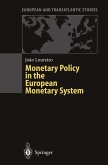European central bank policy is already taking place today in an informal way. It comprises, in short, European exchange rate management and interest rate policy decisions within and without the European Monetary System (EMS). A focal point of such policy actions are the money market operating targets of European Central Banks. Those central bank policies appear to be dominated, however, by the Deutsche Bundesbank. This has caused recurring critical discussion of European asymmetries and German leadership in monetary stabilization pOlicies, before and after the EMS turbulences of September 1992. However, it should be pointed out that German dominance has increasingly evolved in a cooperative way, ever since the Committee of European Central Bank Governors began to meet regularly in 1964; the Basle-Nyborg accord of 1987 formed a further stage of cooperative efforts within the EMS. Presently, a small group of countries (including Benelux and Austria) generally follows, after prior 'concertation', German monetary policy patterns. In this narrow sense, there exists a European central bank policy within a "Deutsche-Mark-Zone". In a broader sense, European central bank policy is shaped, after proper consultation, by monetary cooperation between the larger EMS countries, but once again dominantly influenced by Germany; recent problems of highjnterest rates in France and elsewhere due to (relative) restrictive German monetary pOlicies are striking examples. German monetary dominance, in the narrow or broad sense, obviously creates, in the long-run, an untenable situation in the eyes of European partner countries.
Dieser Download kann aus rechtlichen Gründen nur mit Rechnungsadresse in A, B, BG, CY, CZ, D, DK, EW, E, FIN, F, GR, HR, H, IRL, I, LT, L, LR, M, NL, PL, P, R, S, SLO, SK ausgeliefert werden.









